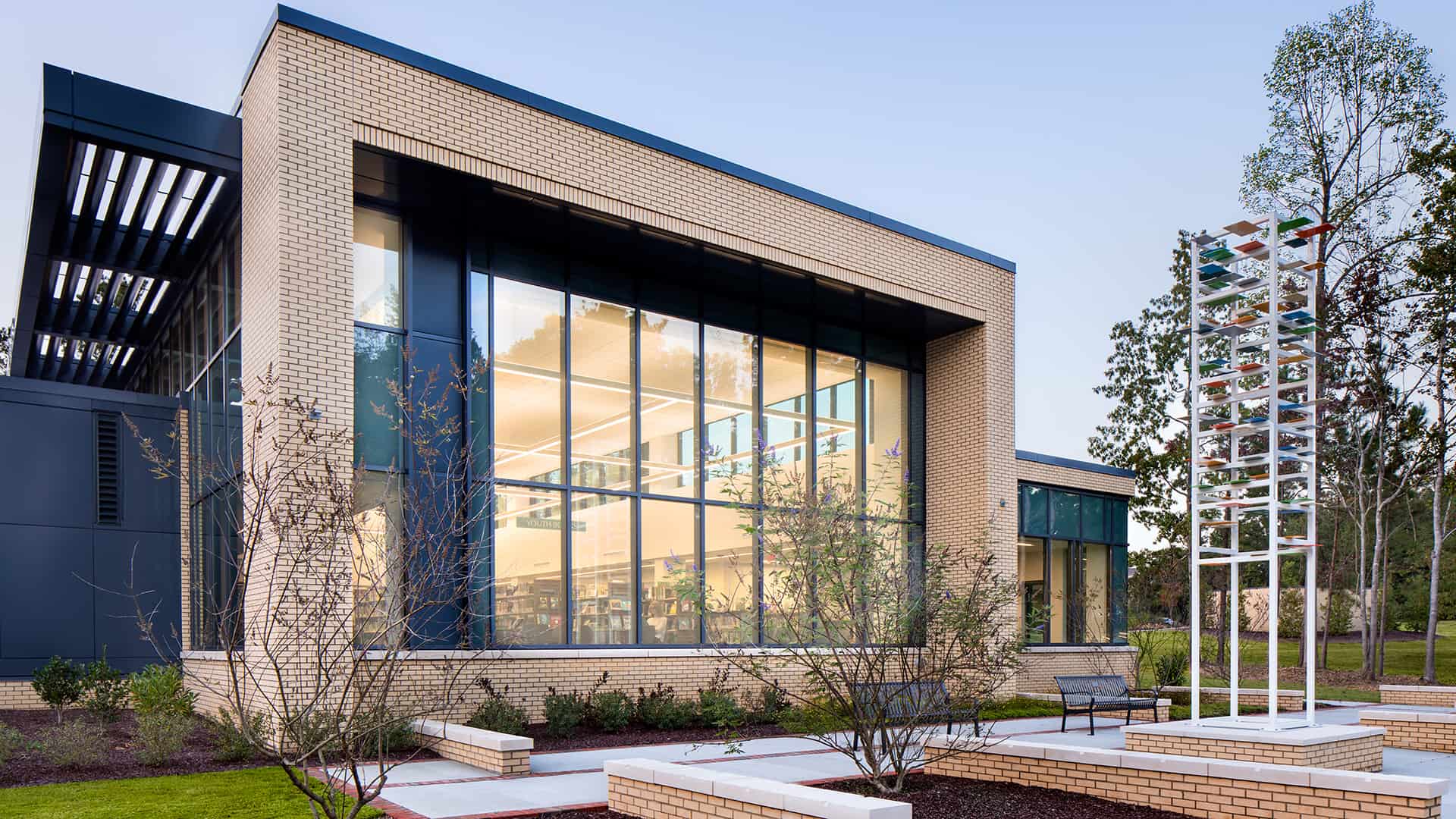Libraries have long been a destination to explore our imaginations. To learn, to research, to wonder. To plan, play, and problem-solve.
For people ages two to 92, today’s libraries do even more. They provide learning opportunities, access to technology, community engagement, social interaction, and job-related support—all for free. The reality is the library is often the only place in a community that provides this variety of services free for anyone to use.
Unfortunately, libraries face a myriad of challenges to meet these ever-evolving needs. First and foremost, a facility’s age significantly influences the types and quality of amenities it can provide. Outdated design may impede a library’s programmatic and technological offerings, like diverse gathering spaces and multimedia access.
Moreover, library staffing and funding needs continue to grow as well. While library staff roles of the past were oriented around help and research, these roles now demand a greater breadth of expertise and technology experience.
Designers as Library Advocates
Whether renovating or building new, architects and designers have a unique and influential opportunity to serve as library advocates. Sharon Crawford, Studio Principal at Little, and Thomas Carlson-Reddig, Community Practice Leader at Little, recently participated in Design Institute Durham, a partnership between Library Journal Design Institute and the Durham County Library (DCL) in Durham, NC. This full-day think tank provided expert panel discussions with architects and librarians, as well as hands-on, architect-led breakout sessions tackling real-life design challenges submitted in advance by attendees.

Here are four key ways Crawford asserts that architects can best advocate for modern library design.
1. Involve the Community and Municipality in Planning
Through surveys, listening sessions, and other community touchpoints, designers can build enthusiasm and rally public support for library projects. “Community support is so critical right out the gate,” Crawford said. “It’s important to be explicit about how design concepts map to the needs of the community and serve the specific population.”
2. Design for a Variety of Spaces and Patrons
As the library’s function evolves, library users need areas for more than learning, although quiet spaces are still paramount. Users benefit from spaces for collaboration, community gatherings, and activities like kids’ camps and speaker presentations, as well as outdoor respite areas. Multi-sensory rooms also support people and caregivers who may have neurodivergent needs. Amidst these functions, prioritizing sightlines in design helps both patrons and staff navigate spaces safely and effectively.
3. Provide Access to Multimedia and Technology
There’s no way around it – today’s world revolves around technology. The better equipped a library is to provide diverse multimedia and technology services, the better it serves its patrons. Access to computers, printers, and Wi-Fi is paramount, while additional services like makers’ spaces, laptop check-out, and EV charging further support and anticipate library users’ shifting needs.
4. Take Advantage of Your Surroundings
In addition to designing onsite outdoor amenities like walking paths and respite areas, taking advantage of the library’s geographic location can provide immense benefits to staff and users. Consider the library’s proximity to public transportation and dining options, as well as its existing natural landscape.
VIEW OUR WORK: Fairfax County Public Schools | Harnett County | Transylvania County | Wake County

Propelling Your Library into the 21st Century
Experienced in both public and private library design, our Community Practice regularly works with our library clients at every stage of their project. If your community is ready to push its library into the 21st Century, here’s how we at Little can help.
- Feasibility Studies: Renovate or Build New? This question is one of the most critical when approaching a library project. Feasibility studies are a prime way we weigh the pros and cons of renovation versus new construction while considering your unique community and programming needs. “Every building needs to evolve,” Carlson-Reddig says. “The best thing we can do is create a building that can adapt.”
- Strategic Planning: There is no “one size fits all” approach to designing a modern library. As such, we regularly collaborate with our partner, ReThinking Libraries, to support strategic planning for libraries of all sizes, including visioning, program development, and community engagement.
- Master Planning: When designing for the community, local knowledge and relationships help fuel a project’s success. Our Community team brings this expertise, as well as our collaborative partnership with ReThinking Libraries, to the table in every library project we undertake. By deeply understanding your community’s demographics and needs, site location, organizational goals, and more, we provide imaginative design solutions to propel your library into the future.

